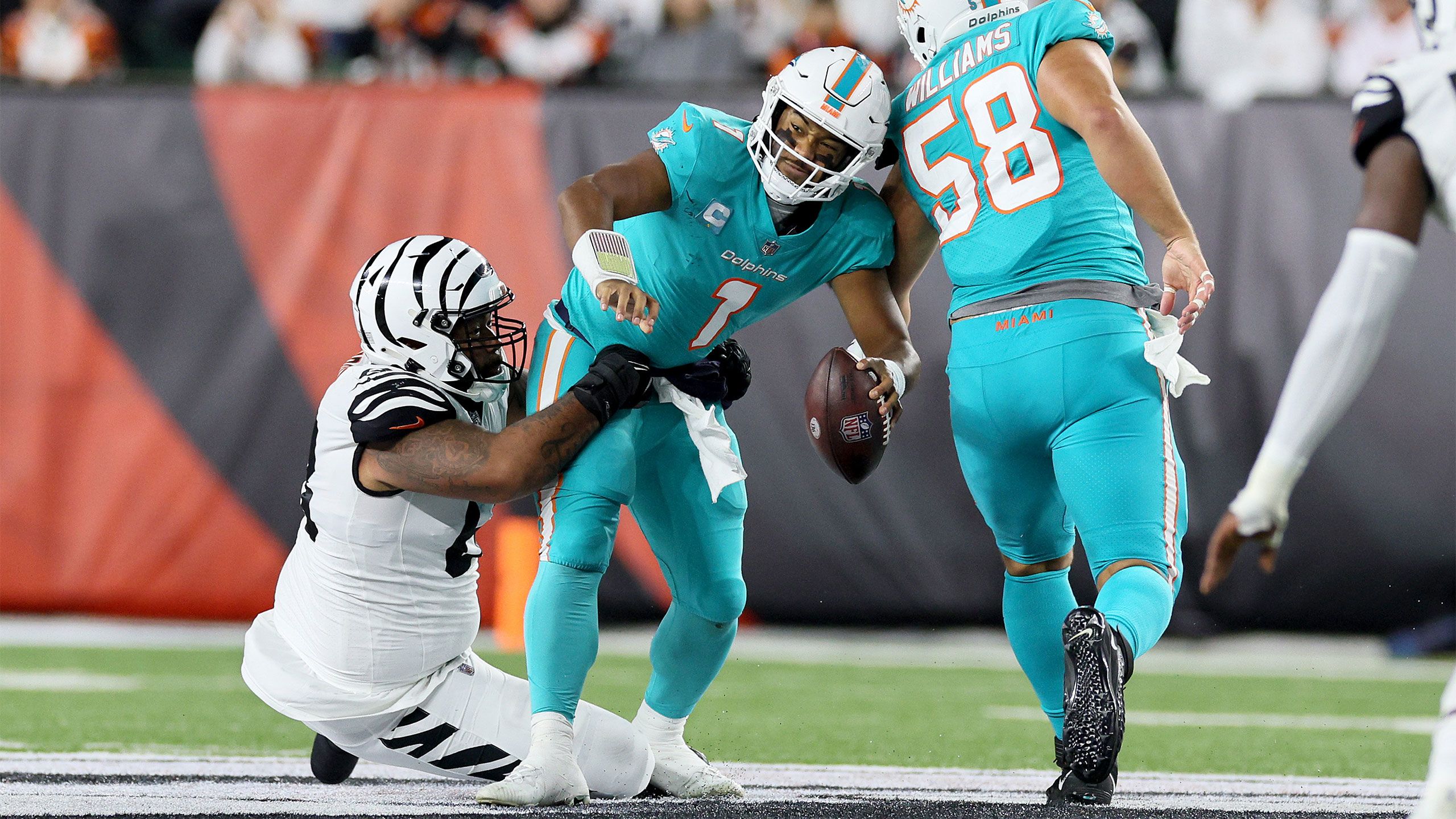Neuroscience Professor Delves into Long-Term Impacts of Traumatic Brain Injuries

Safety discussions have reignited among individuals at risk for concussions and the experts tasked with keeping them healthy
Rutgers University–Camden Assistant Professor of Biology Brian Corbett was among the millions who watched in horror as Miami Dolphins quarterback Tua Tagovailoa lay on his back and reached skyward, his fingers clenched in what doctors call a “fencing response,” signaling he had experienced a traumatic brain injury (TBI). This physiological reaction was all too familiar to Corbett, whose research focuses on the neurological impact of concussions. Corbett, a researcher in the Rutgers–Camden College of Arts and Sciences, has studied models of TBI in rodents, which help scientists learn more about how head injuries affect the human brain.
“The effects of concussions, especially repeated concussions in close succession, are impossible to ignore,” said Corbett, referring to a prior head injury that Tagovailoa appeared to have suffered just four days earlier. Corbett explained that TBI causes deleterious neurological effects, including neuroinflammation and increased aggregates of a protein called tau. Tau aggregates, he said, result in “neurofibrillary tangles” in the brain, which are hallmarks of different types of dementia, including Alzheimer's disease. Both neuroinflammation and neurofibrillary tangles lead to neuronal dysfunction.
On Oct. 15, Tagovailoa was medically cleared to return to competition after missing just two weeks of action. In light of the quarterback’s impending return to the field, Corbett noted that his research shows the potential of TBIs to have damaging long-term effects even after initial symptoms subside. He said that while some people can experience multiple concussions and remain relatively healthy in the short term, they may still develop neurological disorders later in life.
“TBI shares comorbidities with dementia as well as psychiatric illnesses such as anxiety and depression,” Corbett said. “Sadly, former NFL linebacker Junior Seau, who requested in his suicide note that his brain be studied by scientists, is a striking example of this. Everyone is different: Some people experience TBIs and develop debilitating disorders. The likelihood of developing neurological problems is influenced by a wide range of factors, like genetics and history of TBIs.”
Corbett warned that, although football is an integral aspect of American culture, more needs to be done to protect football players at every level.
“Policies and equipment that protect players’ physical and mental health should be taken with the utmost seriousness,” Corbett said.
The NFL’s concussion protocol came under fire for having cleared Tagovailoa to return to play after his previous head-related incident. The league responded by adopting a new protocol that prohibited any player showing signs of ataxia—defined by the league as “abnormality of balance/stability, motor coordination or dysfunctional speech caused by a neurological issue”—from returning.
“The effects of concussions, especially repeated concussions in close succession, are impossible to ignore”

Andrea Stippick, head athletic trainer for Rutgers University–Camden Athletics, echoed Corbett’s concern, maintaining that concussions can alter an athlete’s health and, worse yet, lead to death if not treated properly. To that end, the Rutgers–Camden training staff adheres to a strict policy to monitor concussions.

Andrea Stippick, head athletic trainer for Rutgers University–Camden Athletics
Andrea Stippick, head athletic trainer for Rutgers University–Camden Athletics
At the beginning of each sports season, Stippick said, Rutgers–Camden athletes complete a concussion baseline testing using the Sports Concussion Assessment Tool 5 (SCAT5) and ImPACT pediatric concussion tests. If the training staff suspects an athlete has a concussion, the athlete takes a post-injury SCAT5 test, and the results are compared to the baseline. If an athlete is confirmed to have concussion-like symptoms, the staff initiates the concussion protocol and contacts the team physician for recommendations on when the athlete can begin the return-to-play protocol.
From that point on, Stippick said, the athlete will complete a concussion progression form—
which includes a symptom checklist—on a daily basis. Once the athlete reaches zero symptoms and the physician clears the athlete, the training staff begins the six-day return-to-play protocol.
Stippick stressed that, as an athletic trainer and a former collegiate athlete, she is sympathetic to how athletes feel when they suffer an injury, let alone one that forces them to sit out. Whenever the training staff is faced with that situation, she said, they explain to the athlete why concussions should be taken seriously and the severity of what could happen if they get hit again.
“More often than not, athletes will be irritated and upset,” Stippick said, “but they understand that living is more important than playing their sport with an unhealed brain injury.”

Creative Design: Beatris Santos